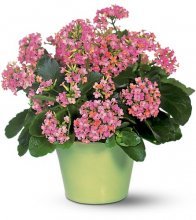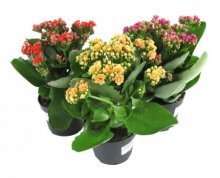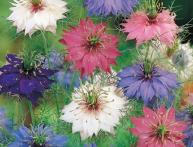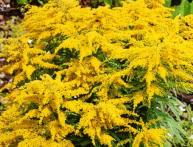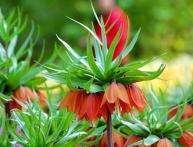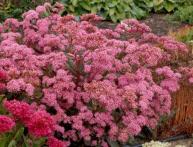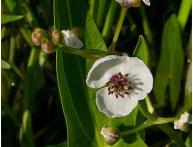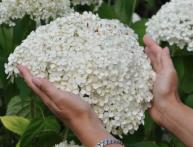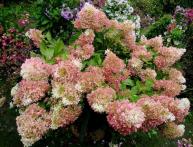Proper care of flowering Kalanchoe
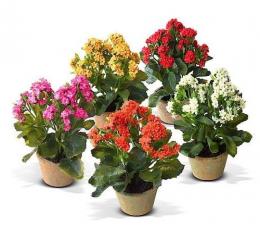
Kalanchoe is a unique representative of the family of comas. The flower is distinguished by its rare beauty and unpretentiousness, but provokes a lot of controversy among connoisseurs. It’s just that many flower growers are sure that blooming Kalanchoe has healing properties. In fact, only Kalanchoe Degremon can be used for medicinal purposes, since its juice is an excellent remedy for nasal congestion.
Blooming Kalanchoe is used only for decorating a room, for which it is ideal. The small, fleshy leaves are reliable and durable, and the huge caps of flowers give the plant a festive look. And the feeling of celebration intensifies even more when Kalanchoe blooms in winter. However, for this it is necessary to provide proper care to the plant, taking into account its needs.
Content:
- Reproduction of flowering Kalanchoe
- Caring for Kalanchoe in the summer
- How to care for Kalanchoe in winter
Reproduction of flowering Kalanchoe
There are several ways to get a new plant into your collection. The simplest one is to purchase a ready-made adult specimen that is already about to bloom. However, such flowers are capricious, and getting them to bloom again is difficult even for an experienced gardener.
A more affordable way to expand your collection home flowers - this is the correct propagation of flowering Kalanchoe. To do this, just press a leaf or small twig to the ground - and within a few days roots will appear.You can also place the cuttings in water and then plant them with roots in small pots.
In general, flowering Kalanchoe reproduces in the following ways:
- Dividing the bush
- By cuttings
- Leaves
- Seeds
Dividing the bush is rarely used, since after injury the plant takes a long time to recover. With the leaf method, you have to wait longer for flowering, but when grown from seeds, Kalanchoe pleases with flowers in about a year. Because of this, gardeners most often propagate this plant by cuttings, which allows them to get a beautiful bush within a few months.
Caring for Kalanchoe in the summer
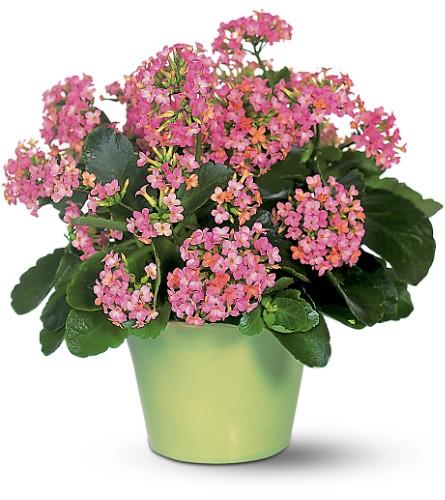
Blooming care Kalanchoe in the summer has its own characteristics that should definitely be taken into account. If you neglect the needs of a flower, you can destroy it.
The most important requirement is good lighting, without which the plant becomes very elongated and loses its decorative properties. Unlike other indoor flowers, Kalanchoe easily tolerates even direct sunlight. In the shade, it is difficult to achieve good growth and bud formation, and in some cases the plant may die.
Watering in the summer should be plentiful, but rare. It is enough to water the Kalanchoe only once a week, but do not allow the water to stagnate. If you water this plant too much, you can cause root rot. The main thing is not to allow the earthen ball to dry out excessively, because the plant will die.
Kalanchoe does not have any special soil requirements and grows well in both light and heavy substrates. However, the flower feels best in soil with added sand. Good drainage must be placed at the bottom of the pot to avoid stagnation of water.
Kalanchoe grows well without constant spraying. To maintain its decorative appearance, its fleshy leaves are wiped with a damp cloth or the flower is occasionally given bath treatments. To enhance growth and flowering, it is necessary to apply special fertilizers for succulents once a week or feed them with regular fertilizers in a smaller proportion.
If you have a balcony, it is best to move Kalanchoe onto it in the summer. In this case, there is no need to carry out preventive treatments against aphids and other pests. If Kalanchoe is on the windowsill all year round, it is recommended to wash the leaves with soapy water once a month.
How to care for Kalanchoe in winter
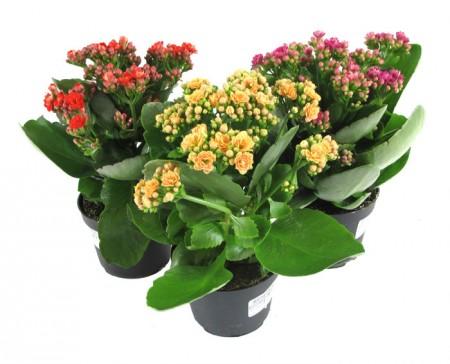
Proper care behind the blooming Kalanchoe in winter is characterized by maximum simplicity. To obtain a lush bush with a large number of buds, Kalanchoe is fed with fertilizers throughout the fall, but try not to exceed the dosage. With an excessive supply of nutrients, the plant only increases its green mass, but refuses to bloom.
The pot must be placed at a distance from any heating devices, but closer to the light source. If the room has low lighting, you will have to provide the flower with lighting. You should also avoid excessive watering, which causes root rot.
Temperatures in winter should fluctuate between 12-15 degrees, and hot wintering leads to severe leaf loss. The plant becomes elongated, the trunk becomes bare, and the buds dry out. The only way to correct the situation is to move the plant to a cool balcony.
Proper care of flowering Kalanchoe is available even to the beginning florist. The main thing is not to flood the plant, keep it close to the light source and do not forget about the cool wintering.
Video tips for caring for Kalanchoe at home:
Interesting information about the vegetable garden

